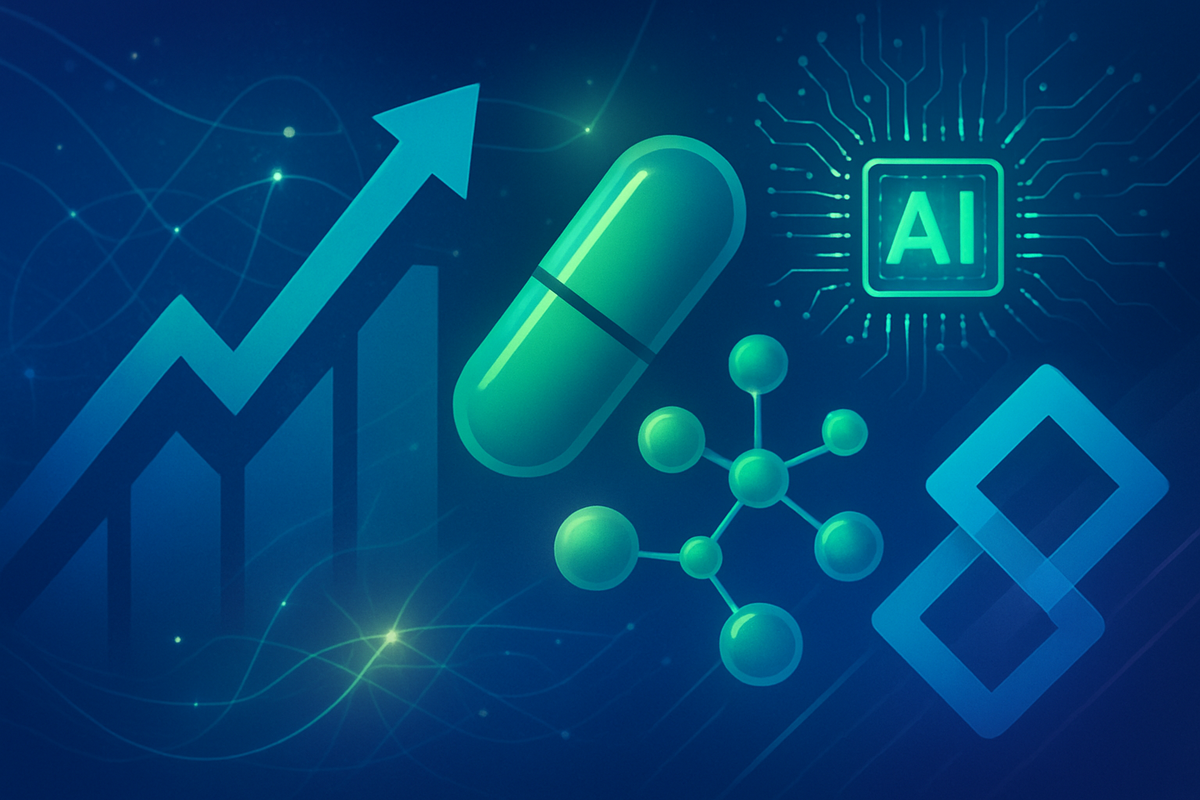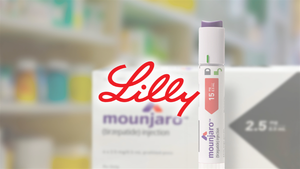
The pharmaceutical and biotechnology sectors are experiencing a period of significant dynamism and robust growth as of November 2025, fueled by a confluence of scientific advancements, a resurgence in mergers and acquisitions (M&A), the transformative power of artificial intelligence (AI), and an evolving investor landscape. With the global biotechnology market projected to reach $1.744 trillion in 2025 and the pharmaceutical industry's spending hitting approximately $1.6 trillion, the industry stands at a pivotal juncture, poised for further expansion despite facing macroeconomic headwinds, declining public market valuations, and the looming challenges of patent expirations and legislative pressures.
This renewed momentum is characterized by an accelerated pace of innovation, particularly in high-impact therapeutic areas such as oncology, rare diseases, and metabolic health. Companies are strategically adapting their portfolios through both internal R&D and aggressive external innovation, with M&A emerging as a primary engine for pipeline replenishment and growth. Investor sentiment, while cautiously optimistic, is steadily climbing, driven by the increasing deal activity, positive clinical trial outcomes, and anticipated interest rate adjustments, signaling a potential return of generalist capital to these vital sectors.
Unpacking the Catalysts: A Deep Dive into 2025's Biopharma Landscape
The year 2025 has been marked by several defining trends that are reshaping the pharmaceutical and biotech industries. A significant resurgence in M&A activity has seen pharma giants deploy substantial "dry powder," with big pharma's deal capacity estimated to exceed $1.5 trillion. Total biopharma M&A transaction value soared to $38 billion in Q3 2025 alone, pushing the year's total to approximately $70 billion in upfront consideration by early October, involving 17 deals each valued at $1 billion or more. This surge is largely driven by the urgent need for large pharmaceutical companies to mitigate the impact of the "patent cliff," which threatens over $200 billion in biopharma revenue by 2030, by acquiring innovative, earlier-stage assets from often undervalued biotech firms.
Key M&A transactions highlighting this trend include Johnson & Johnson (NYSE: JNJ)'s $14.6 billion acquisition of Intra-Cellular Therapies (NASDAQ: ITCI) for its neurological portfolio, Merck (NYSE: MRK)'s $10 billion move for Verona Pharma (NASDAQ: VRNA) to bolster its respiratory pipeline, and Sanofi (NASDAQ: SNY)'s $9.5 billion purchase of Blueprint Medicines (NASDAQ: BPMC) to expand its rare-disease offerings. Notably, Pfizer (NYSE: PFE) re-entered the burgeoning obesity market with a $10 billion acquisition of Metsera, while Novartis (NYSE: NVS) secured Avidity Biosciences (NASDAQ: RNA) for $12 billion, focusing on neuromuscular disease RNA therapies. These deals underscore a strategic shift towards acquiring novel modalities and mechanisms of action, often in preclinical or Phase 1 stages, accounting for a quarter of total M&A value in 2024.
Alongside the M&A spree, the U.S. Food and Drug Administration (FDA) has maintained a steady pace of approvals, with 17 groundbreaking medications cleared by mid-2025, and an expectation of nearly 70 approvals and label expansions by year-end. Significant approvals include Journavx (suzetrigine), a first-in-class non-opioid analgesic, and Blujepa (gepotidacin), a novel oral antibiotic for UTIs. Anticipated approvals include subcutaneous Leqembi (lecanemab) for Alzheimer's and subcutaneous Keytruda (pembrolizumab) for various cancers, reflecting a continuous flow of innovation into the market. The anti-obesity drug market, particularly GLP-1 receptor agonists, has exploded, with the global market projected to reach $19.6 billion in 2025 and potentially $104.9 billion by 2035. Novo Nordisk (NYSE: NVO) and Eli Lilly (NYSE: LLY) remain dominant players, with their semaglutide and tirzepatide products driving significant growth, and supply shortages from 2024 largely easing in the current year. Furthermore, artificial intelligence (AI) is rapidly transforming drug discovery and development, with projections indicating AI will drive 30% of new drug discoveries by 2025, significantly reducing timelines and costs in preclinical stages through applications like target identification and molecule design.
Corporate Fortunes: Who Wins and Who Loses in the Current Climate
The current biopharma landscape presents a clear delineation of potential winners and losers. Big Pharma companies with substantial "dry powder" are positioned as major winners, leveraging their financial might to acquire innovative biotech firms and replenish pipelines facing patent expirations. Companies like Johnson & Johnson (NYSE: JNJ), Merck (NYSE: MRK), Sanofi (NASDAQ: SNY), Pfizer (NYSE: PFE), and Novartis (NYSE: NVS) are actively consolidating their positions in key therapeutic areas through strategic M&A, ensuring future revenue streams and market relevance. Their ability to integrate promising assets and scale up development will dictate their long-term success.
Innovative Biotech companies, particularly those with strong clinical data in high-demand areas like oncology, rare diseases, metabolic disorders (especially obesity), and neurology, are also significant winners. Suppressed valuations in recent years have made them attractive acquisition targets, offering lucrative exits for investors and a path to market for their therapies through the resources of larger pharmaceutical partners. Companies like Intra-Cellular Therapies (NASDAQ: ITCI), Verona Pharma (NASDAQ: VRNA), Blueprint Medicines (NASDAQ: BPMC), Metsera, and Avidity Biosciences (NASDAQ: RNA) exemplify those benefiting from this M&A surge. The focus on early-stage assets also means that smaller, research-heavy biotechs with compelling preclinical or Phase 1 data are increasingly valuable.
Conversely, biotech companies with weak pipelines, poor clinical trial results, or those in highly competitive or less innovative therapeutic areas may struggle to attract investment or acquisition interest. The pressure from the Inflation Reduction Act (IRA) on drug pricing could also negatively impact companies heavily reliant on a few high-priced drugs, particularly those nearing patent expiration. Furthermore, companies that fail to embrace or effectively integrate AI and digital transformation tools into their R&D processes may find themselves at a disadvantage, facing higher costs and longer development timelines compared to their more technologically advanced counterparts. The "patent cliff" itself represents a significant challenge for legacy pharmaceutical companies that haven't adequately invested in new drug discovery or external innovation, putting billions of dollars of revenue at risk.
Broader Implications: Reshaping the Healthcare Ecosystem
The current trends in pharmaceuticals and biotech extend far beyond individual company balance sheets, profoundly reshaping the broader healthcare ecosystem. The aggressive M&A strategy by large pharma is a direct response to the "patent cliff" and the need to secure future growth, indicating a fundamental shift towards external innovation as a core R&D strategy. This trend has ripple effects on contract research organizations (CROs) and contract manufacturing organizations (CMOs), who may see increased demand as acquired pipelines are advanced and scaled. It also fuels a competitive environment for talent, particularly in cutting-edge fields like gene therapy, RNA therapeutics, and AI-driven drug discovery.
Regulatory bodies, notably the FDA, are adapting to this rapidly evolving landscape. While encouraging the use of AI in drug development, the FDA has also issued draft recommendations to ensure the safety and effectiveness of AI-driven therapies, indicating a growing focus on the ethical and practical implications of advanced technologies. The ongoing debate around drug pricing, exacerbated by policies like the Inflation Reduction Act, will continue to exert pressure on pharmaceutical companies to justify their pricing strategies and potentially lead to more value-based contracting models. Historically, periods of intense M&A have often followed major patent expirations or significant technological shifts, mirroring the current environment where both factors are prominent. The current focus on GLP-1s for obesity and other metabolic conditions also highlights a broader societal shift towards preventive and chronic disease management, potentially impacting other sectors like medical devices and nutrition.
The integration of AI represents a paradigm shift, promising not only faster drug discovery but also more personalized medicine approaches and optimized clinical trials. Collaborations between technology giants like Nvidia (NASDAQ: NVDA) and biotech firms such as Recursion Pharmaceuticals (NASDAQ: RXRX) underscore the blurring lines between tech and pharma. This technological convergence could lead to new regulatory frameworks and specialized expertise within regulatory agencies to evaluate AI-powered solutions. The intensified competition in therapeutic areas like oncology and metabolic health will likely drive further innovation but also increase the pressure on companies to differentiate their products effectively.
The Road Ahead: Navigating Future Opportunities and Challenges
Looking ahead, the pharmaceutical and biotech sectors are poised for continued transformation, presenting both significant opportunities and formidable challenges. In the short term, the M&A frenzy is expected to persist, particularly targeting mid-cap biotech firms with promising late-stage assets or novel platforms. Investors should anticipate further consolidation and strategic partnerships as companies jockey for position in high-growth areas. The FDA's approval pipeline will remain a critical indicator, with a focus on gene therapies, advanced biologics, and AI-designed molecules. The continued easing of GLP-1 supply shortages will enable broader patient access and further cement their market dominance, but also intensify competition among new entrants.
In the long term, the strategic pivots required will center on sustainable innovation and access. Companies must not only discover and develop groundbreaking therapies but also navigate complex pricing pressures and ensure equitable access to their products. The widespread adoption of AI will necessitate significant investment in data infrastructure, computational expertise, and ethical AI governance. This will create new market opportunities for AI solution providers and data analytics firms specializing in healthcare. Furthermore, the industry may see a greater emphasis on preventive medicine and diagnostics, driven by the success of therapies for chronic conditions like obesity and Alzheimer's, which could shift healthcare spending patterns.
Potential scenarios include a continued boom in biotech valuations if M&A remains robust and clinical success rates are high, or a more tempered growth if macroeconomic uncertainties persist or regulatory scrutiny on drug pricing intensifies. The rise of personalized medicine, enabled by advancements in genomics and AI, could lead to highly targeted therapies for smaller patient populations, requiring new commercialization strategies. Geopolitical tensions and global health crises will also continue to influence R&D priorities and supply chain resilience. Ultimately, companies that can effectively integrate technological innovation with patient-centric approaches, while also addressing affordability and access, will be best positioned for sustained success.
A Resilient Sector Poised for Enduring Impact
In summary, the pharmaceutical and biotech sectors are demonstrating remarkable resilience and dynamism in November 2025, driven by a powerful combination of M&A activity, groundbreaking scientific innovation, and the transformative influence of artificial intelligence. The aggressive pursuit of external innovation by large pharmaceutical companies, fueled by the imperative to overcome the "patent cliff," is revitalizing the biotech landscape and accelerating the development of novel therapies. The explosion in the anti-obesity drug market, spearheaded by GLP-1 agonists, underscores a significant shift in healthcare priorities and market potential.
Moving forward, investors should closely monitor several key indicators: the continued pace and strategic direction of M&A, the output of the FDA's approval process for novel drugs, advancements in AI applications across the drug development lifecycle, and the evolving regulatory landscape surrounding drug pricing and AI governance. The successful integration of cutting-edge technologies, coupled with a commitment to addressing unmet medical needs and ensuring patient access, will be paramount for companies seeking to thrive. The long-term outlook for the global biotechnology market remains strong, with sustained growth projected, making these sectors critical areas of focus for both innovation and investment. The lasting impact of this period will likely be a more agile, technologically advanced, and patient-focused biopharmaceutical industry, continuously pushing the boundaries of medical science.
This content is intended for informational purposes only and is not financial advice


















